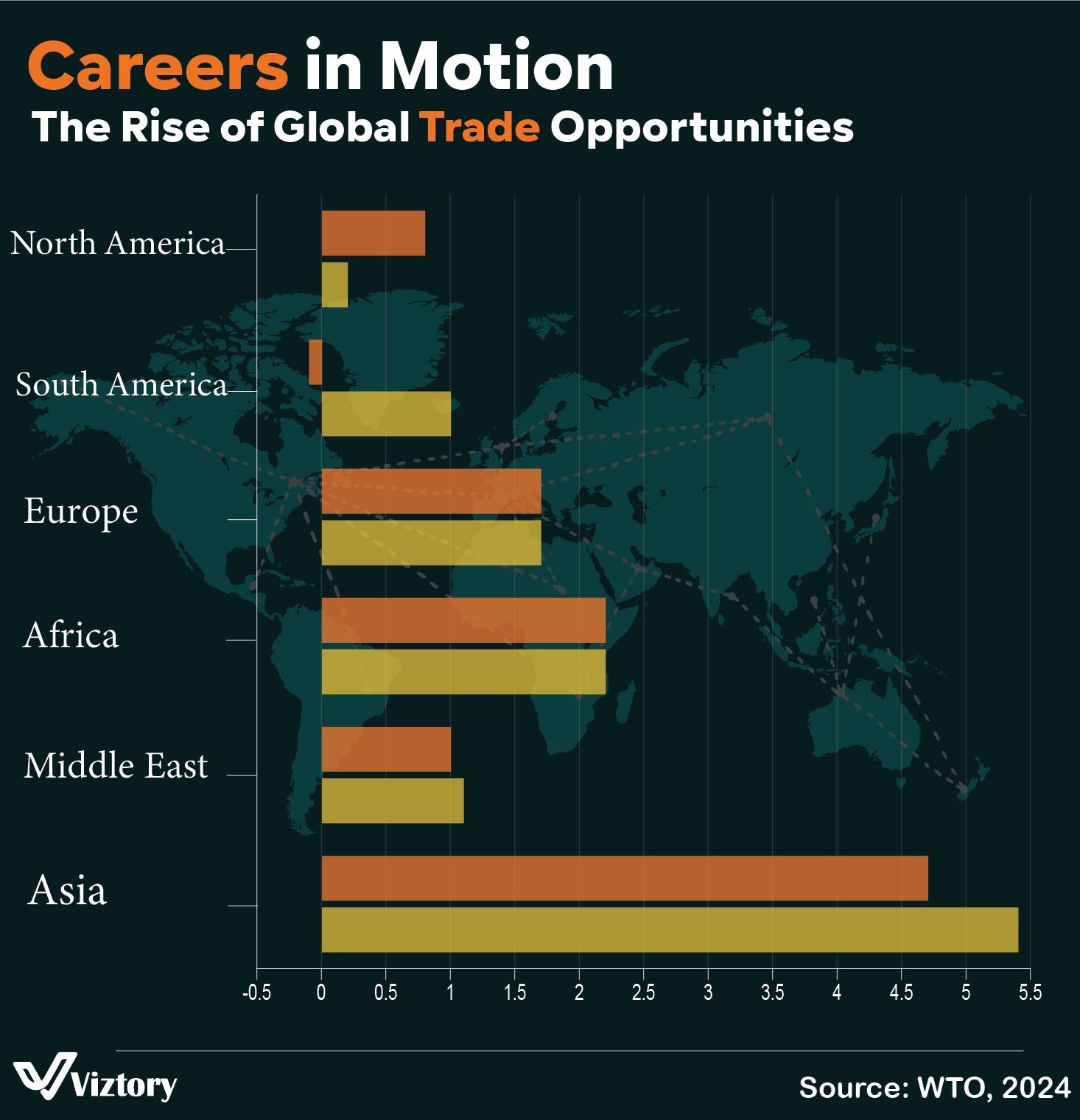Careers in Motion: The Rise of Global Trade Opportunities
-
Apr, Sat, 2025
Introduction
In today’s interconnected world, global trade is no longer just an economic concept—it is a dynamic force shaping careers, industries, and regional development. As international trade expands, it fuels the demand for skilled professionals who can navigate complex markets, manage logistics, and build cross-border relationships. The infographic titled “Careers in Motion: The Rise of Global Trade Opportunities” highlights how various regions, including the Middle East, are being impacted by these global shifts.
Body
The data presented shows a clear rise in trade-driven career opportunities across major regions such as Asia, Africa, Europe, and the Middle East. Asia leads the chart with the highest level of growth in trade-related careers, followed closely by Africa and Europe. The Middle East shows moderate but significant growth, reflecting its strategic position as a trade hub connecting Asia, Africa, and Europe.
North America and South America show varying levels of engagement, with some sectors growing and others stabilizing or shrinking slightly. These shifts are influenced by policy changes, economic stability, digital transformation, and geopolitical developments.
The Middle East, in particular, is becoming a vital trade corridor due to major infrastructure projects like the UAE’s DP World expansions, Saudi Arabia’s Vision 2030, and the continued importance of the Suez Canal in Egypt. As a result, demand is rising for professionals in logistics, supply chain management, international business law, and digital commerce.
Analysis
The visual makes it clear that Asia and Africa are emerging leaders in trade-based employment, but the Middle East’s role cannot be underestimated. Its strategic geographic position makes it a central player in global logistics. Moreover, regional governments are heavily investing in technology and trade zones to diversify their economies beyond oil.
Trade growth in the Middle East is also being powered by economic diversification policies, which create new opportunities in e-commerce, tech startups, financial services, and international logistics. These fields require a new generation of workers with expertise in both traditional trade principles and modern technologies such as blockchain, AI, and data analytics.
Conclusion
The global rise in trade opportunities is setting the stage for a new era of career mobility. While Asia dominates the chart in terms of sheer volume, the Middle East is strategically positioned to become a future leader in global trade, thanks to its location, infrastructure investment, and shifting economic focus. As trade networks evolve, so too must the workforce—adapting, innovating, and moving forward with the global economy. For professionals, this means a world of opportunities is truly in motion.

